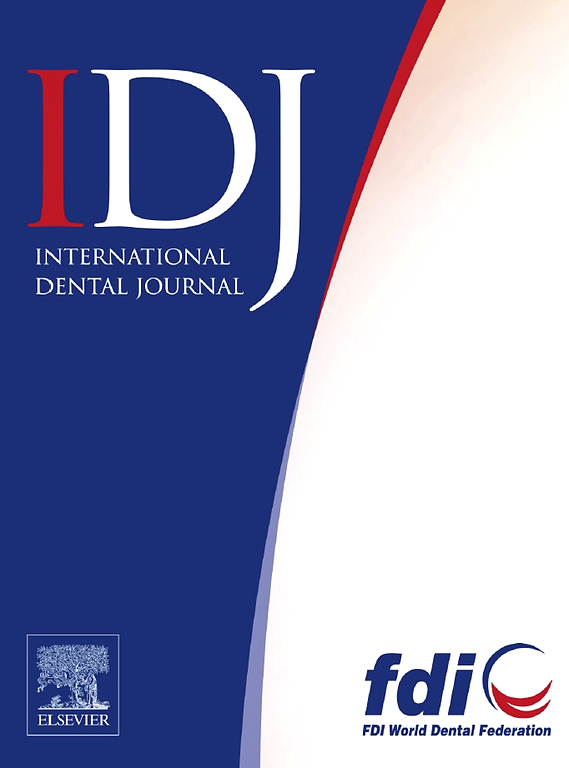分形分析作为早期种植体丢失的预测指标:一项回顾性研究
IF 3.7
3区 医学
Q1 DENTISTRY, ORAL SURGERY & MEDICINE
引用次数: 0
摘要
分形维数(FD)和空隙度越来越多地用于评估骨小梁结构,但它们对早期种植体失败的预测价值仍不确定。本研究探讨了全景x线片和锥形束计算机断层扫描(CBCT)测量的FD和间隙是否可以预测下颌骨早期种植体丢失。方法回顾性病例对照研究纳入48例患者,其中24例早期种植体失败,24例种植体存活至少5年且无种植体周围炎。所有患者都有全景x线片,30例患者(每组15例)也有CBCT扫描。评估下颌3个区域的FD和腔隙:额、前磨牙和磨牙。采用ImageJ软件配盒计数法。利用White - Rudolph法计算全景图像的FD;基于cbct的FD值采用White和Rudolph以及Kato等人的方法得出。结果两组在两种成像方式下的FD值和间隙值均无显著差异(P > 0.05)。结论从全景x线片和CBCT图像中获得的分形维数和空隙度值不能预测早期种植体失败。尽管分形分析提供了一种评估骨小梁结构的非侵入性方法,但它不应单独用于评估种植体预后。虽然分形分析可以提供对骨微观结构的补充见解,但其单独应用在预测早期种植体失败方面缺乏足够的可靠性。未来有必要进行更大规模的研究。本文章由计算机程序翻译,如有差异,请以英文原文为准。
Fractal Analysis as a Predictor of Early Implant Loss: A Retrospective Study
Introduction and aims
Fractal dimension (FD) and lacunarity are increasingly applied to assess trabecular bone structure, yet their predictive value for early dental implant failure remains uncertain. This study investigated whether FD and lacunarity, measured on panoramic radiographs and cone-beam computed tomography (CBCT), can predict early implant loss in the mandible.
Methods
A retrospective case-control study included 48 patients—24 with early implant failure and 24 with implants surviving at least 5 years without periimplantitis. All had panoramic radiographs, and a subset of 30 patients (15 per group) also had CBCT scans. FD and lacunarity were assessed in 3 mandibular regions: frontal, premolar, and molar. ImageJ software with box-counting method was used. FD from panoramic images was calculated using the White and Rudolph method; CBCT-based FD values were derived using both the White and Rudolph and the Kato et al. methods.
Results
No significant differences in FD or lacunarity values were found between groups in any region on either imaging modality (P > .05).
Conclusions
Fractal dimension and lacunarity values obtained from panoramic radiographs and CBCT images did not demonstrate predictive capability for early implant failure. Although fractal analysis offers a non-invasive approach to assess trabecular bone architecture, it should not be used in isolation to estimate implant prognosis.
Clinical Relevance
While fractal analysis may provide complementary insights into bone microstructure, its standalone application lacks sufficient reliability for predicting early dental implant failure. Future studies involving larger cohorts are warranted.
求助全文
通过发布文献求助,成功后即可免费获取论文全文。
去求助
来源期刊

International dental journal
医学-牙科与口腔外科
CiteScore
4.80
自引率
6.10%
发文量
159
审稿时长
63 days
期刊介绍:
The International Dental Journal features peer-reviewed, scientific articles relevant to international oral health issues, as well as practical, informative articles aimed at clinicians.
 求助内容:
求助内容: 应助结果提醒方式:
应助结果提醒方式:


